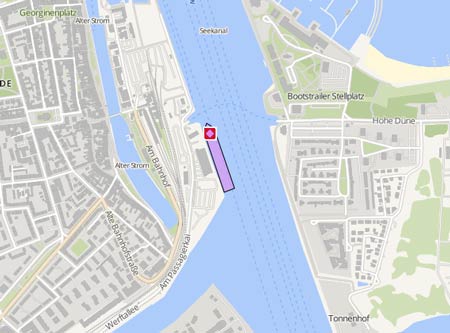AMERICAN MARINER
Kurs/Position
Die letzten Häfen
Die letzten Wegpunkte
Die neuesten Nachrichten
NTSB report into grounding incident published
The National Transport Safety Board issued a report critical of the master and operator of the 'American Mariner' that touched bottom while maneuvering out of Sault Ste. Marine, Ontario on Jan 7, 2023, saying that the master was required to multitask during a complex maneuver. The report calls for a sufficient number of qualified mariners to be on the bridge, especially at times when a vessel is maneuvering in confined spaces. The report details the circumstances around the incident. Visibility was good and the wind and sea conditions were calm as the vessel began the departure at around 07.20 a.m. from Canadian waters and bound for Superior, Wisconsin. The master was on the bridge while the first mate was supervising unmooring and workboat operations. The bosun and a seaman were on the stern handling lines while other crew had been sent ashore to cast off the mooring lines. The vessel has a total crew of 19, but alone on the bridge, the NTSB concluded the master was required to multitask while managing the departure. The vessel was sailing at about 4 knots and the master had left the bow thruster on because he was expecting a current in the channel which is about 480 feet wide and has a depth of 24 feet. The channel requires a turn and just outside the buoyed channel are shoal waters. As the master straightened the vessel to head outbound, he felt a light shudder. The fathometer read 13 feet below the keel, and he wondered if they had made contact with ice, although none was visible. Using a searchlight, he confirmed they were clear of a buoy. The first mate in the upper engine room felt a bump and reported a loud screeching noise.”He thought they might have contacted a buoy but on deck observed mud and rock debris in the water. Water levels were not responding as expected the engineers reported in the ballast tanks and subsequently, when the vessel was drydocked three days later, an 80-foot-long hull indentation was found. There were holes in three ballast tanks. The repairs cost $600,000. The NTSB determined that the master’s initial angle of departure from the dock and a close approach to the shoal water positioned the vessel at a poor angle to complete the maneuver into the channel. The vessel overshoot the turn touching bottom in the shoal on the opposite side of the channel. The NTSB acknowledged a few other extenuating circumstances. The Canadian Coast Guard in the winter replaces conventional lit buoys with an unlit ice spar buoy to avoid damage to the buoys. On the American Mariner, the master acknowledged that the electronic chart system did not display the footprint of the vessel. Also, safety depths were not programmed into the system. While they concluded that the master’s multitasking made it difficult to manage the navigation, they also highlighted that effective use of all available resources adds to situational awareness. Proper staffing of the bridge during the departure would have provided additional people to react to the situation and manage the required tasks for safe navigation. Report with photos: https://maritime-executive.com/article/ntsb-critical-of-master-alone-of-bridge-multitasking-which-led-to-grounding
News schreiben

